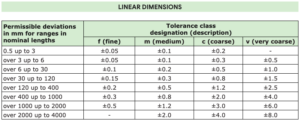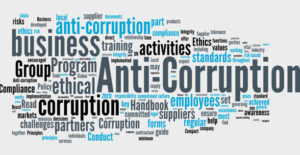Anti-Money Laundering AML: Overview

Globally, money laundering is rife. A year’s worth of estimated global money laundering amounts to $800 billion to $2 trillion in current US dollars, or 2 to 5% of the world’s gross domestic product. (UNDOC). Financial institution employees must be aware of their duties in preventing the entry of “dirty money” into the system. To maintain compliance on both an individual and institutional level, they must also be aware of the anti-money laundering legislation.
Sadly, some businesses and experts disregard the rules and do not follow them. Some people break the rules wilfully. Noncompliance comes at an excessive price.
Penalties for corporate noncompliance include:
- loss of license
- Insurer cancellation
- Order to Cease and Desist
- formal agreement in writing
- fines of up to $500,000 or twice the transaction’s value
- Financial loss as a result of fraud, charge-offs, or asset forfeiture actions
- decrease in brand value
- Significant legal costs
- Risks to reputation
Personal fines for infractions consist of:
- Up to 20 years imprisonment
- personal penalties for workers
- Money lost as a result of fraud, charge offs, or asset forfeiture actions
- Significant legal costs
- Risk to reputation
- being dismissed or banned from the banking sector
-
Money laundering – what is it?
Money laundering is a means for hiding illegal revenues without endangering the criminals who stand to gain from them.
-
Why is there a regulation against money laundering?
James H. Freis, Jr., the FinCen Director, outlined the need for the AML requirements when discussing the goal of the money laundering legislation on April 23, 2013.
The Residential Mortgage Lenders and Originators (RMLOs), which include independent mortgage loan companies and mortgage brokers, are primary mortgage finance providers, according to the Financial Crimes Enforcement Network (FinCEN), and are in a unique position to assess and identify money laundering risks and fraud while directly assisting consumers with their financial needs and safeguarding them from financial abuses.
The AML assists with:
- recognising fraud and money laundering risks
- defending consumers against financial criminal abuses
- fending off the financing of terrorism or money laundering
-
What are the financial institutions obliged to do in terms of AML regulatory requirements?
No of the size or kind of the business, lenders must be compliant as of August 13, 2012, and they must have an AML programme in place. According to B’1029.210, they ought to:
- ‘Based on the loan or finance company’s assessment of the money laundering and terrorist financing risks connected with its products and services, include policies, procedures, and internal controls. ‘Policies, procedures, and internal controls developed and implemented by a loan or finance company under this section shall include provisions for complying with the applicable provisions of subchapter II of chapter 53 of title 31, United States Code and this part, incorporating the company’s agents and brokers into its anti-money laundering programme, and obtaining all pertinent customer-related information required for an effective anti-money laundering programme.
- ‘Appoint a compliance officer’.
- ‘Offer appropriate personnel ongoing training regarding their obligations under the programme. A loan or financing company can fulfil this criterion with regard to its employees, agents, and brokers by either directly training them or confirming that they have received training on the company’s products and services from a reliable outside source.
- “Offer independent testing to monitor and keepup an adequate programme, including testing to assess compliance of the company’s agents and brokers with their program-related duties.” The depth and regularity of the testing must correspond to the dangers that the company’s goods and services represent. Other than the individual specified in paragraph (b)(2) of this section, such testing may be carried out by a third party or by any officer or employee of the loan or finance firm.
-
BSA: Bank Secrecy Act; 31 USC 5311
The main anti-money laundering (AML) law in the United States is the Bank Secrecy Act (BSA).
The purpose of the Act is to assist the federal government in identifying unlawful activities by monitoring certain cash-based transactions.
BSA specifications:
Lenders are required to provide records of all daily cash transactions worth more than $10,000.
Keep track of recipients and senders of money transfers above $3,000 in your records.
Through escrow or from the business, compile data and keep records on sales of traveler’s checks, cashier’s checks, and money orders for sums ranging from $3,000 to $10,000.











